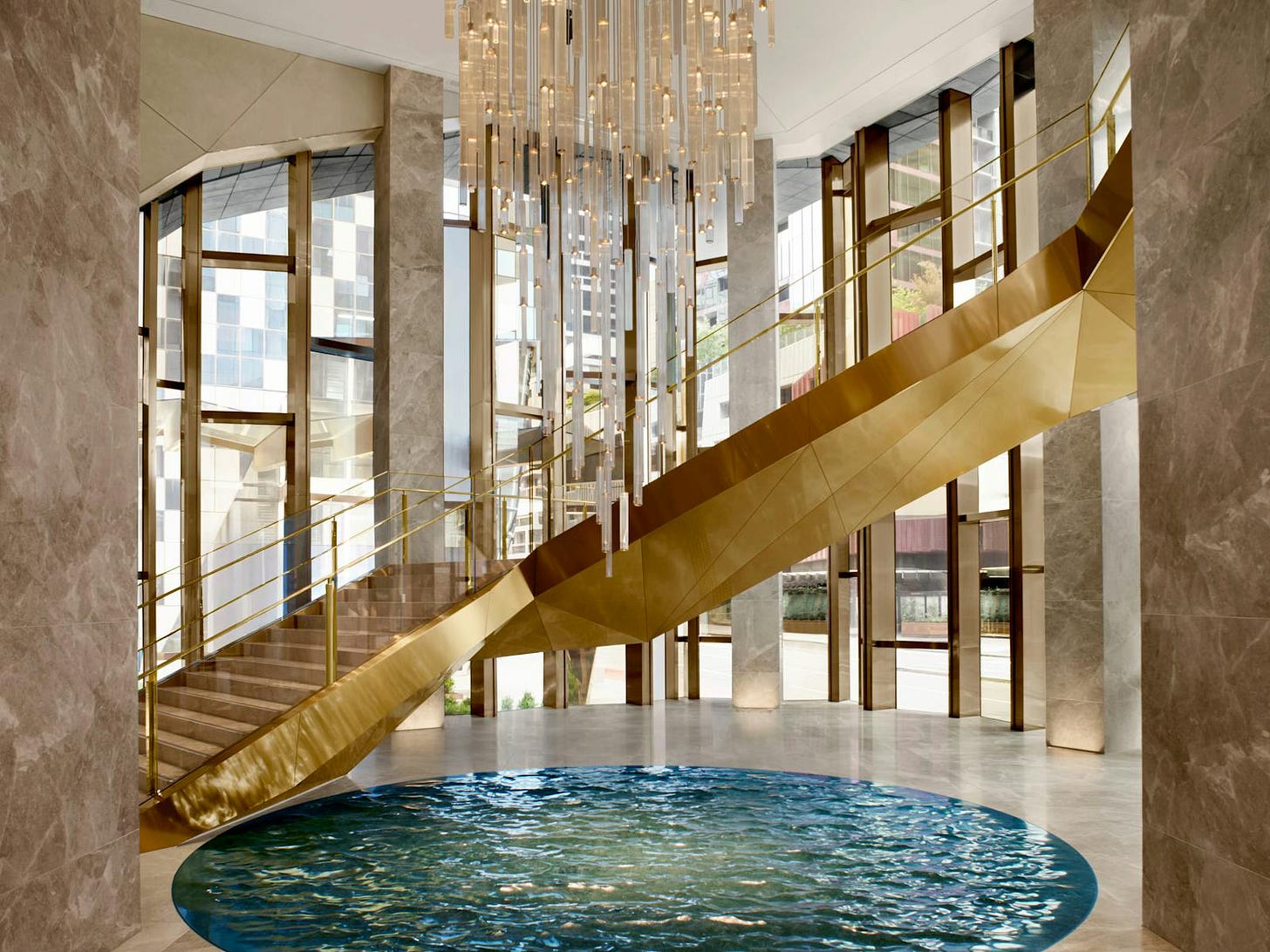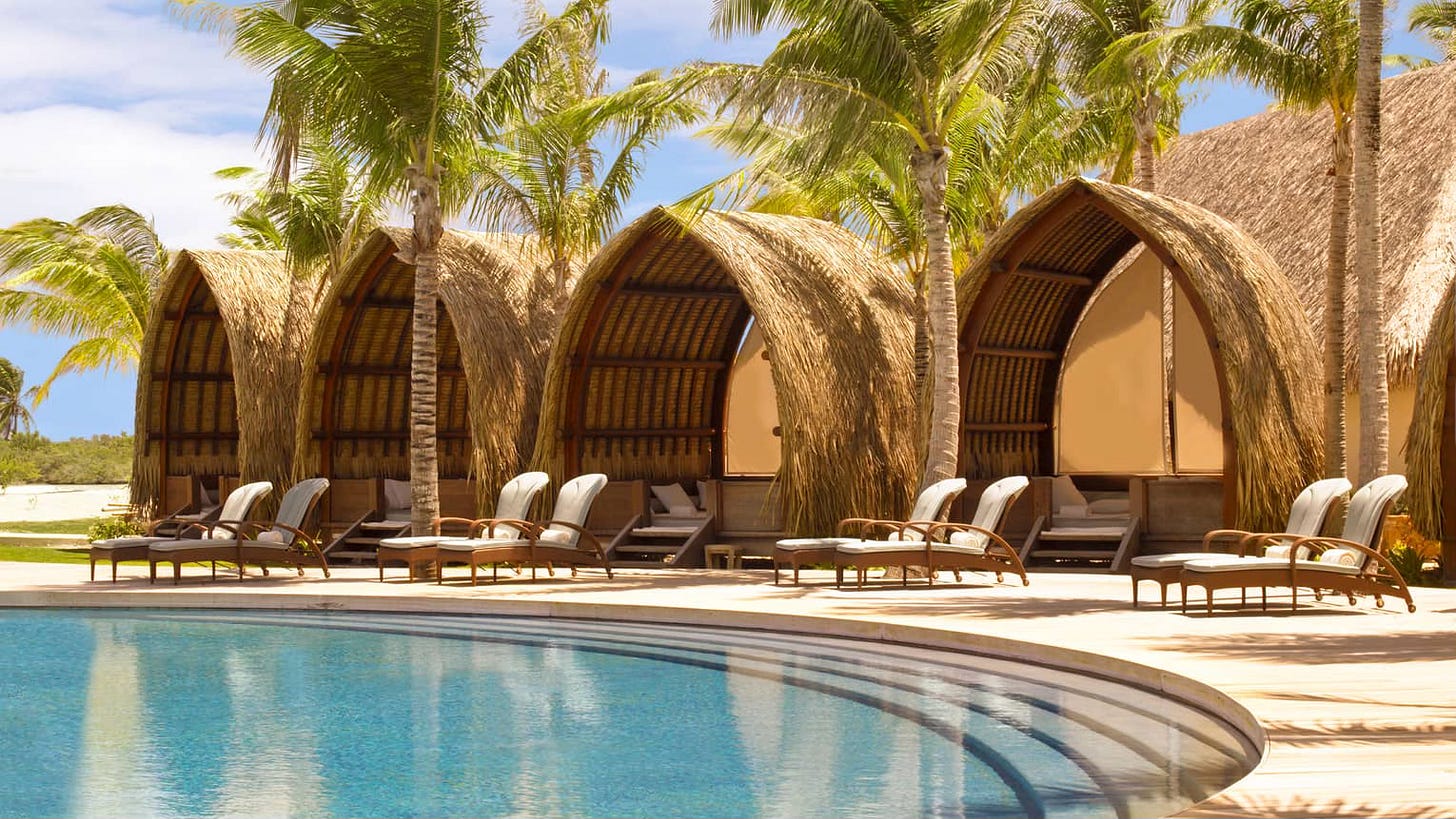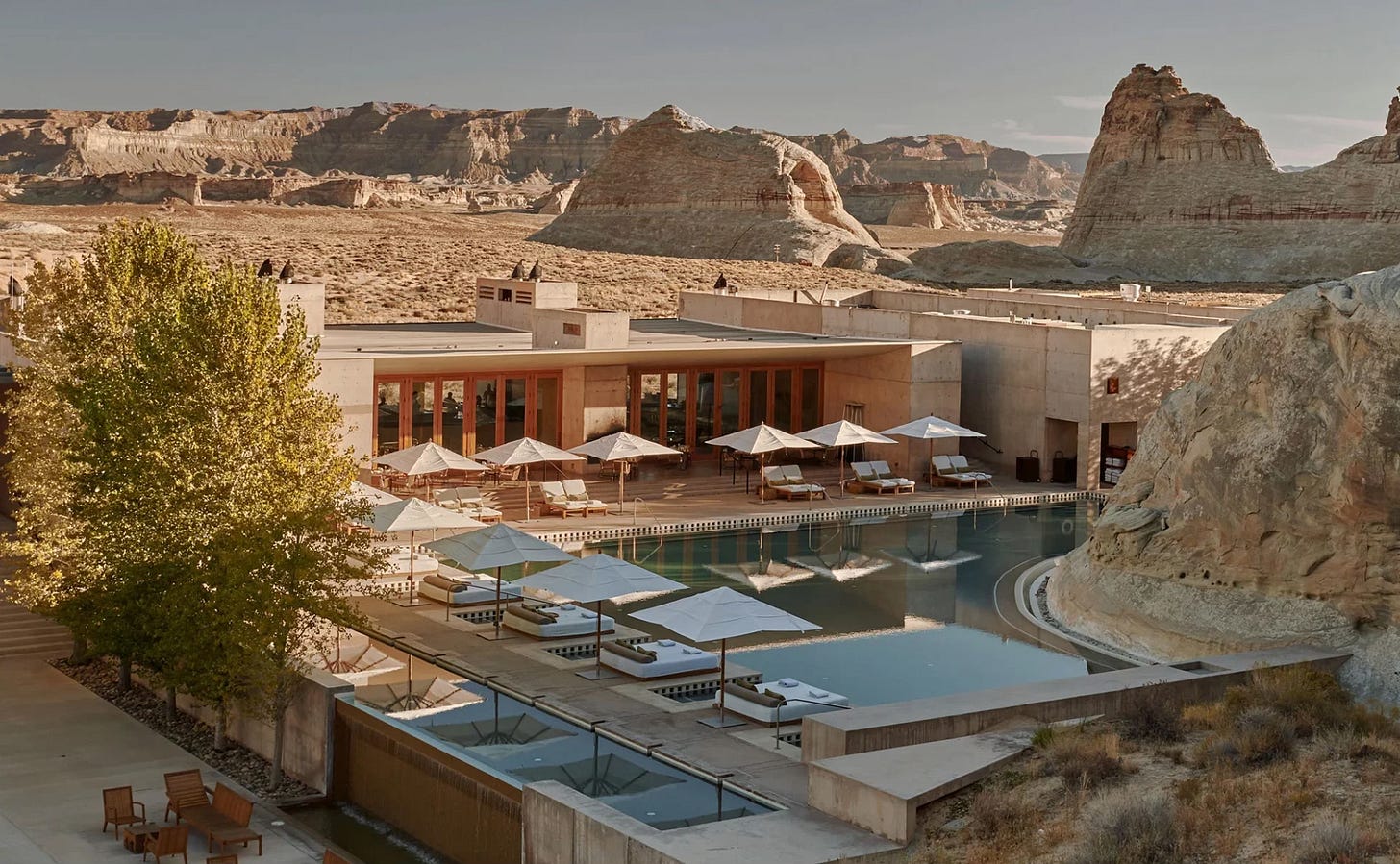The Rise of Hospitality-Driven Living
Why the Best Multifamily Developers Think Like Hoteliers
A family office I work with recently shared a multifamily deal that immediately caught my attention—not because of the architecture or yield projections, but because of its positioning. The project leans fully into hospitality—not just in branding, but in how the resident experience is designed and managed. It feels more like a Four Seasons than a typical rental community.
It isn’t a gimmick. It’s a strategy. And it’s working.
That experience reinforces a trend my co-author, Graye Mehl, and I see gaining momentum across the industry: the most forward-thinking multifamily developers are beginning to think like hoteliers. They’re designing spaces that deliver lifestyle, not just leases. They’re prioritizing wellness, personalization, and human connection—and in doing so, they’re winning the loyalty of a new generation of renters.
In this piece, Graye and I explore how brands like Ritz-Carlton, Four Seasons, and Aman have set the tone for this shift—and why hospitality is quickly becoming the new standard in luxury multifamily.
“Multifamily living is no longer a utility. Residents expect better experiences, more conveniences, and a sensitive community form in new developments.”
— Urban Land Institute
1. The Essence of Hospitality
The Ritz-Carlton: The Gold Standard
The Ritz-Carlton doesn’t just provide service—it creates moments. "Wow Stories" like a chef flying in allergy-safe ingredients from another country or a manager hand-delivering a reimbursement for a stained suit aren’t exceptions. They’re the culture.
From Diptyque amenities to curated culinary experiences, The Ritz-Carlton is about personalization, elegance, and excellence. Every detail says: you matter.
Four Seasons: The Golden Rule in Practice
Four Seasons’ enduring luxury is grounded in one idea: treat others as you wish to be treated. That philosophy shows up in seamless service, deep human connection, and spaces designed not just to impress, but to comfort.
It’s not about extravagance—it’s about making people feel seen. From jet travel to sunset views, their brand is less about flair, more about belonging.
Aman: Stillness as a Service
Aman isn’t trying to be loud. Their properties—intimate, serene, and locally rooted—deliver “effortless care” without intrusion. Every location feels like a sanctuary. Staff move with quiet confidence. The experience is immersive, not performative.
Aman isn’t just luxury—it’s presence. And that’s a value today’s residents are increasingly seeking at home.
2. The Multifamily Shift
From Lease to Lifestyle
Remote work changed everything. By 2025, over 36 million Americans will work remotely. For these residents, home is more than a place to sleep. It’s a workplace, wellness center, social hub, and personal brand all in one.
Developers are responding with co-working lounges, high-speed internet baked into rent, private meeting pods, and comfort-forward amenities. The best are designing homes around how people live now—not how they used to.
Meet the New Renter
Today’s luxury renters are high earners, renters-by-choice, and design-conscious. They care more about lifestyle than ownership. They want community, flexibility, and experiences that align with their identity.
Three archetypes dominate:
Renters-by-Choice: Affluent, mobile, lifestyle-focused
Entrepreneurs/Professionals: Working from anywhere, valuing design and flexibility
Empty Nesters: Downsizing from $1M+ homes without sacrificing quality
These renters don’t want generic luxury. They want story-driven, branded living that reflects their values.
Wellness Is Wealth
Wellness is no longer a niche. It’s the baseline. Residents are seeking developments that support physical, emotional, and mental health—with spa-like fitness centers, biophilic design, and social programming that feels like a retreat.
Branded Residences = Identity
People don’t just rent homes—they buy into a lifestyle. That’s why branding matters. A great brand speaks to aspirations. It communicates design sensibility, values, and community.
The best developments have:
A clear visual identity
Messaging that reflects purpose and prestige
A vibe that resonates with target residents
People don’t want square footage. They want a story they belong to.
3. Where Luxury Is Moving
It’s not just about what you build—it’s where you build it. While the legacy luxury markets still matter (NYC, LA, Miami), the next frontier is emerging in markets where population, affluence, and lifestyle demand intersect.
Top Growth Markets:
Dallas, TX
Charlotte, NC
Phoenix, AZ
Austin, TX
These metros combine value, talent migration, and lifestyle appeal. Developers who get in now aren’t just riding a trend—they’re building the future.
4. Hospitality as a Competitive Edge
Most multifamily properties have tech. But not all of them have soul. What separates the winners? Thoughtful amenities that echo five-star hotels—because luxury today is emotional, not just functional.
Here’s what that looks like:
Concierge services
Resort-style pool decks with cabanas
Entertaining kitchens & wine lounges
Spa-inspired bathrooms
Custom closet systems
Private terraces
Dedicated pet spas
These aren’t perks. They’re expectations. And they’re driving higher rents, faster lease-ups, and long-term loyalty.
5. Hospitality in Action
Case Study: The McKenzie (Dallas, TX)
A 22-story tower that feels more like a private club than a rental building. Targeting downsizers and professionals, The McKenzie offers:
Units up to 3,282 sq ft
Wolf appliances, Sonos systems, and spa bathrooms
Concierge, valet, and a resident-only lounge
Boutique fitness + wellness programming
Premium rents from $3,800 to $18,000+
It’s luxury living without compromise—and it’s working.
Case Study: The Bergen (Phoenix, AZ)
Tucked in the Arcadia–Paradise Valley neighborhood, The Bergen is Phoenix’s answer to Parisian-style apartment living.
Grand layouts (1,600–3,000 sq ft)
Wolf kitchens, deep balconies, private foyers
24/7 concierge and valet
Whiskey lounge, wine room, and chef’s kitchen
Rents from $8,000 to $16,000+
Designed for ultra-high-income renters who expect privacy, elegance, and ease.
Final Word: The New Standard Is Experiential
We’re witnessing a quiet revolution in multifamily. It’s no longer enough to deliver square footage, quartz countertops, and a gym. Today’s renters are discerning, design-savvy, and seeking emotional ROI as much as financial value.
They want to feel something. To belong to something.
The most forward-thinking developers understand this—and they’re not just delivering units. They’re crafting environments that reflect identity, foster connection, and deliver a sense of ease that used to be reserved for luxury resorts.
This isn’t a marketing trend. It’s a structural shift in how long-term value is created.
In this new era, your advantage won’t come from what you build—but from how it makes people feel.
If this shift resonates with you, I’d love to stay connected.
Hospitality-forward development is changing how we think about multifamily—and it’s a conversation worth having.
Cheers, John & Graye
📰 Subscribe to The LineUp for more insights on how capital, design, and strategy intersect in the built environment.
🎙️ Tune in to Private Capital Perspectives, where we explore what smart investors and operators are doing next.
💬 Apply to join The Investor Circle—a curated community for real estate operators and capital allocators navigating the next chapter of private markets. Click here to learn more about The Investor Circle.














I’m all about this stuff. It ain’t living if you can’t throw a little (service) hospitality in there
Great piece. I floated this “hotel-grade living” concept years ago and got blank stares from brokers, other GPs, even an LP buddy I’m close with. In hindsight, I think they weren’t skeptical of the idea—just of the fact that a 30-year-old me could actually pull it off.
Then a deal hit the market that proved the whole thesis. Sponsor bought up every unit in a tired ‘70s condo complex in a secondary Sunbelt MSA I’d bought a couple of deals in. Full gut job.
Think: Miele/Wolf kitchens, spa showers, Equinox-style gym, saltwater infinity pool with teak deck and cabanas, virtual concierge, outdoor yoga, First Friday mixers, etc. Rents jumped from $1,000 to $2,500+ in under 18 months, even a couple of rookie NBA guys moved in.
The deal generated a project-level 2.8x MOIC inside 2 years. GP had put up a 10% co-invest but let friends/family into the GP, so he walked away with something like a 15x MOIC. It was on smaller numbers to be fair bc of the friends/family co-GPs but still. Don't need to do a 15x multiple that frequently before you're getting into stupid numbers.
I’m finally in a position to run this play myself and scouting distressed B-/C+ assets in great locations. The opportunity is there if you’re willing to spend real capex and think past granite counters and LVT. My angle is bundling: rent + utilities + gig-speed Wi-Fi + optional upgrades like housekeeping, valet laundry, furnished units w/ curated design, dog walking, etc.
The goal is to make moving so annoying it’s functionally irrational. You’re not just switching apartments—you’re canceling ten services and rebuilding your lifestyle from scratch.
And honestly, this whole thesis stems from a macro view I have about CRE in general: 99% of real estate GPs are actually dumb. Like, truly. Somewhere along the way, everyone just agreed 30–50% annual turnover is “normal,” despite the fact that literally every other business treats customer retention like a religion. Imagine if Verizon lost 40% of their users every year. Heads would roll. But in multifamily? That’s Tuesday.
Rant finished & you got yourself a new subscriber my friend 😊👍